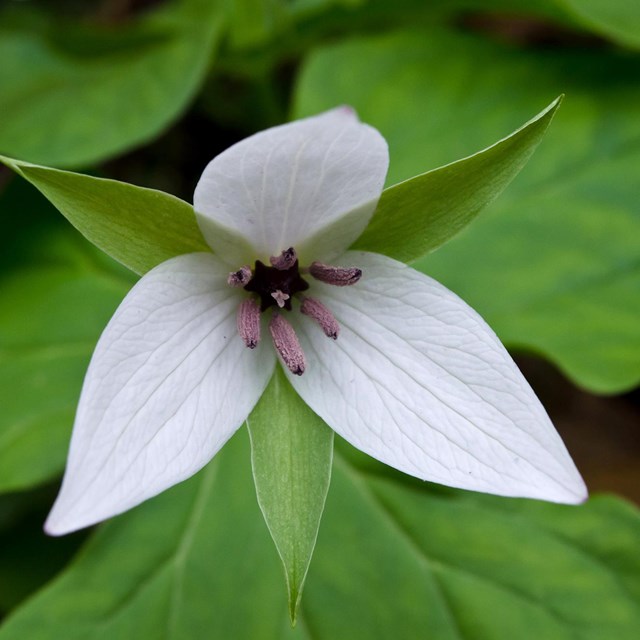
Great Smoky Mountains National Park The Smokies Runs on PollinatorsWhy are pollinators important in the Smokies?Pollinators are one of the most essential components in maintaining diverse ecosystems. They are responsible for the creation and maintenance of a variety of habitats that many organisms rely on. More than 1,500 species of flowering plants thrive within the boundaries of the park, and the vast majority of them depend on pollinators to reproduce. 
NPS Pollinators and PlantsWhat is a pollinator?A pollinator is an agent, most commonly an insect or another animal, that carries pollen from the male part of the flower (stamen) to the female part of the same or different flower (stigma). As the pollinator is visiting a flower, either to feed, collect pollen, or rest, it will inadvertently get pollen stuck to its body hairs, wings, legs, etc. and transfer it to another flower as it continues to forage. 
NPS Why do pollinators pollinate?Bats, birds, beetles, and flies often visit flowers in search of food, shelter, nest-building materials, and sometimes even mates. Some pollinators, including many bee species, intentionally come to flowers to collect their pollen. Others, such as many butterflies, birds and bats move pollen accidentally. Pollen can stick to their bodies while they are drinking feeding or just wandering by and is then transported to wherever they go next resulting in unintentional pollination. Do all plants need a pollinator to reproduce?No, while many plants depend on pollinators for fertilization through a process known as cross-pollination, other plants have adapted to alternative methods. For instance, some species rely on wind and water to facilitate the transfer of pollen. 
NPS Native plants and their importantanceA native plant is a plant that has occurred naturally in a region, habitat, or ecosystem without human introduction for thousands of years. These plants are important because they have special relationships, known as symbiotic relationships, with native wildlife. This means that many native animals are dependent on native plants to survive, such as the monarch butterflies dependance on milkweed. When you want to support native wildlife, choosing native plants is always the best idea. Dangers to pollinatorsThere are many things that threaten pollinators, including habitat destruction, pesticides, diseases, invasive species, and climate change. Protected areas like national parks provide suitable habitat and are refuges for these species. You can help pollinators by planting native plant species in your garden, giving them a better chance of survival. 
NPS Pollinator Garden at Sugarlands Visitor CenterIn the plaza of Sugarlands Visitor Center, pollinators have been given a helping hand thanks to an extensive pollinator garden maintained by a dedicated group of park staff and volunteers. What Blooms?A few of the many species of flowering plants that can be found in the pollinator garden.
Kenzie Connor 
Kenzie Connor 
Kenzie Connor 
Kenzie Connor 
Kenzie Connor 
Kenzie Connor Learn More
|
Last updated: October 28, 2025


